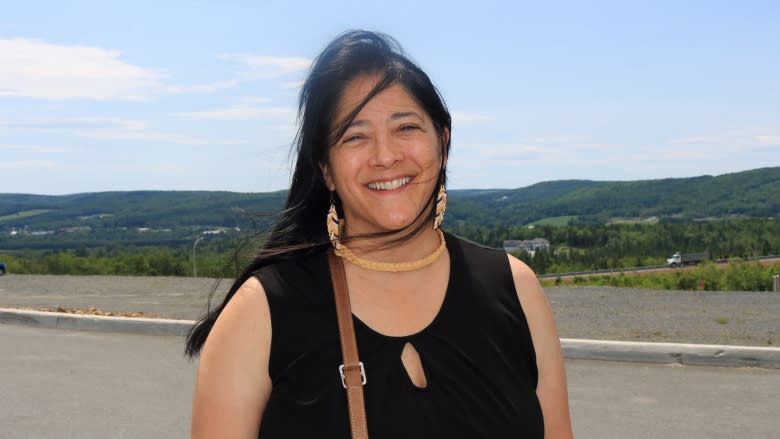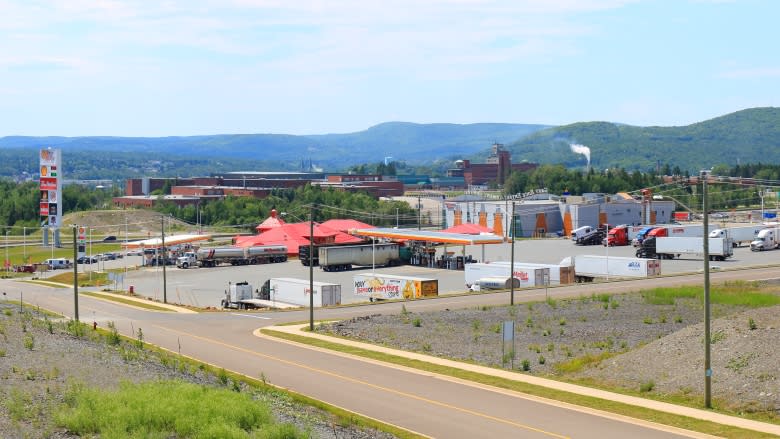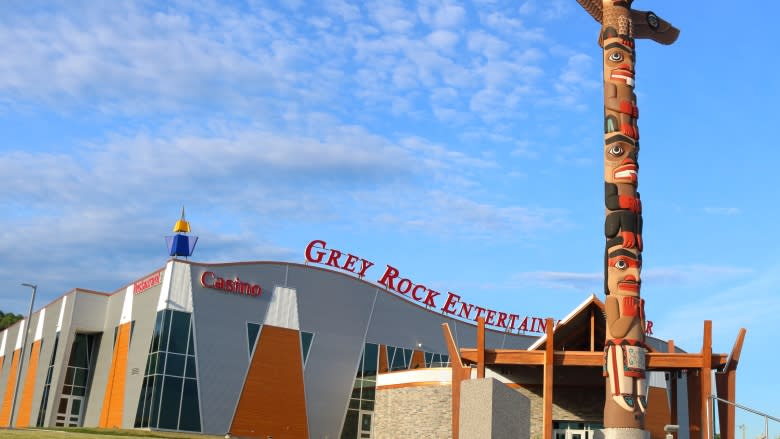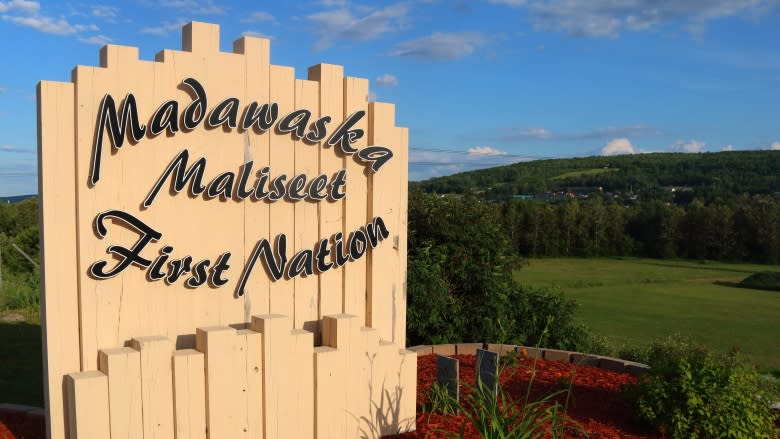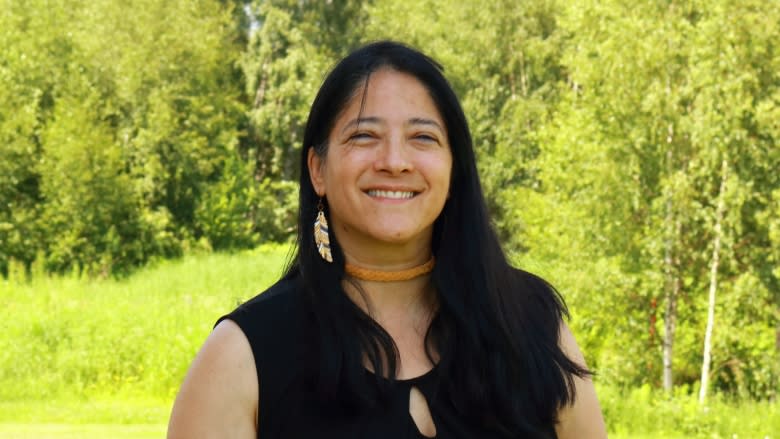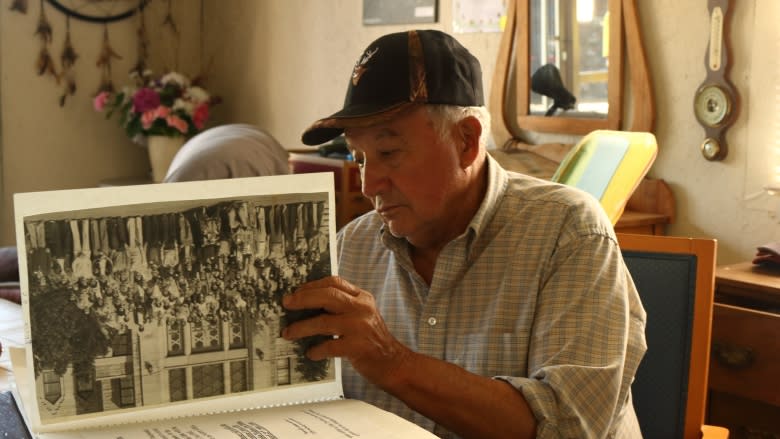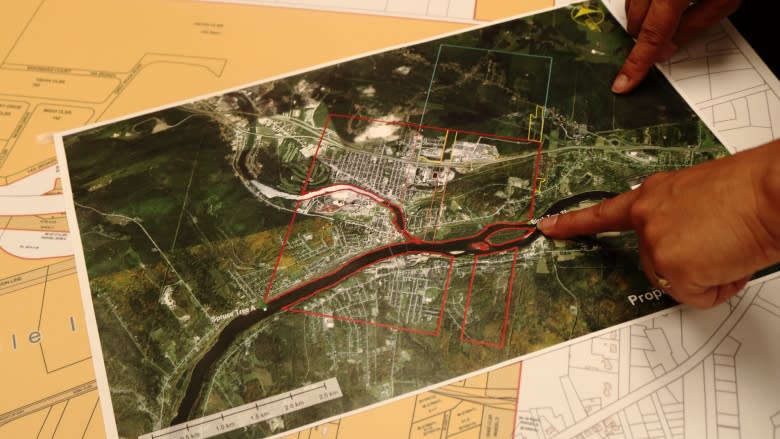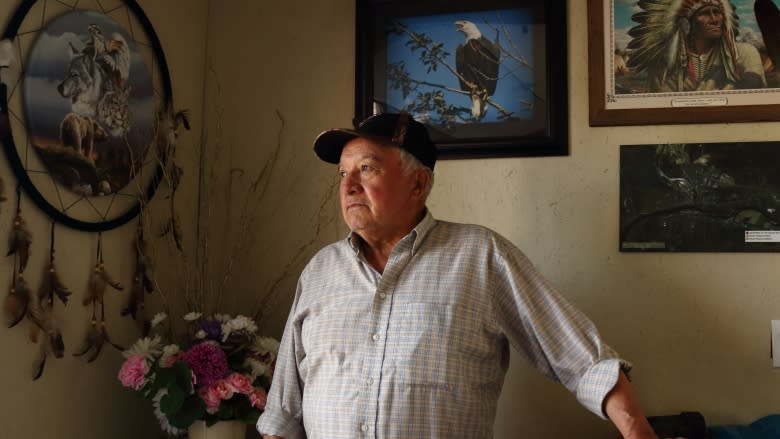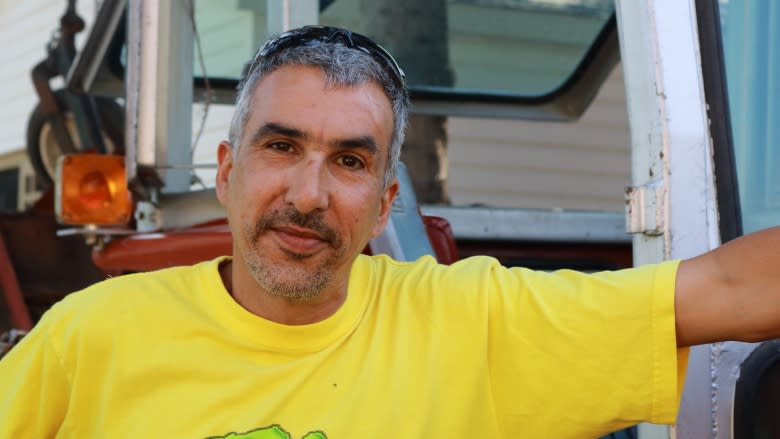From casinos to cannabis: how a tiny First Nation forged a big business empire
It's a blistering July afternoon at the Edmundston Truck Stop. The air vibrates with the low rumbling of a dozen idling 18-wheelers burning fuel.
For Chief Patricia Bernard of the Madawaska Maliseet First Nation, that's the sound of money. The big rigs have 600-plus litre tanks — and the Indigenous-owned gas bar is a popular spot to fill up before truckers hit the Quebec border.
"See all those?" Bernard said. "Every time one of those big trucks fills up, that's a thousand dollars."
Gas is just a small fraction of the revenue-generating potential at the Grey Rock Power Centre.
The retail centre, owned by the Edmundston-area First Nation, is a red-hot piece of real estate, right on New Brunswick's border with Maine and Quebec, with up to 15,200 vehicles passing by daily on the Trans-Canada Highway.
Giant roadside signs advertise gaming at the Grey Rock Casino, fast-food restaurants, a smoke shop, and a Ford dealership.
A decade ago, the entire 28-hectare hillside was "a forest," said Joanna Bernard, Patricia's sister and CEO of the Madawaska Maliseet Economic Development Corp.
The Madawaska Maliseet First Nation bills itself as "one of the most prosperous and thriving communities in New Brunswick today."
With a population of just 547 — 198 live on the reserve — the First Nation is home to multiple million-dollar businesses, and almost everyone who can work has a job.
In 2017, the band distributed more than $3 million to band members on a per capita basis. (Compare that with the Province of New Brunswick, which in 2017 had a net debt per capita of $18,217.)
This week, the First Nation announced it will become the first reserve in New Brunswick to become a licensed producer of cannabis.
How a tiny Wolastoqiyik community ended up on such a progressive path is a story of patience, reclaimed land, tax agreements and savvy leadership.
'Very progressive'
Chief Bernard, who is also the First Nation's legal governance adviser, comes from a line of strong women.
Her mother, Margaret Elizabeth DiMaggio, married Stewart Bernard of the Madawaska First Nation. In 1985, Margaret was the first woman and the first non-native person to be elected Madawaska chief. She served from 1985 to 1987, opening the door for other women to enter office — including her two daughters.
Patricia's older sister, Joanna Bernard, was elected chief in 2003. In 2013, she was inducted into the Order of New Brunswick for her efforts to ensure the prosperity of the First Nation.
The First Nation's senior leadership is entirely made up of women: chief Patricia Bernard, plus councillors Diane Pelletier and Donna Wallace-Bourgeault.
"Since 2007, it's been all women, every term," said Patricia Bernard.
"This community is very progressive."
From railroad tracks to riches
Land, according to Bernard, is "everything" in Madawaska.
For generations, said former chief John Wallace, a resident for 83 years, outside companies and settlers saw Indigenous land as free for the taking.
"If they didn't want anything on their land, they would shove it down on the Indian reserve," Wallace said. "Garbage dump for all the city. Pipeline. Two-lane highway. Railroad tracks. You name it."
The first step to securing the band's future, Patricia Bernard said, was seeking payment for the tangle of power lines, pipelines and highways built on Maliseet land without permission.
In the late 1800s, Canadian Pacific Railway used about about three hectares of reserve land to build a rail line from Woodstock to Edmundston. After Canadian Pacific abandoned the land in 1971, Fraser Papers Inc. used it to build a pipeline to carry liquid pulp mill effluent, which the mill left above ground, creating a hazardous barrier across the community.
After an unsuccessful attempt to sue Fraser and CP, the claim was finally accepted by the federal government for negotiations in May 2004. In 2008, Ottawa paid Madawaska $5.7 million for failing to protect its interest in the reserve. The community reached an agreement with Fraser to keep operating the pipeline underground.
"I was expecting I was going to be happy if we got our million dollars," said Joanna Bernard, who negotiated the claim.
Half the $5.7 million settlement was invested in the Grey Rock Power Centre. The other half was distributed to band members. But the reserve still needed a way to divert highway traffic onto the reserve.
"There were no ramps to get off and onto the reserve through the Trans-Canada," Patricia Bernard said. The province refused to build the ramps, citing cost.
The First Nation then took the province to negotiating school — refusing to take "no" for an answer.
"Unfortunately, we had to play hardball," Bernard said. They came back to the province with proof Edmundston's high school, Cité des Jeunes A.-M.-Sormany, had been partially built on reserve land.
"We negotiated that we would surrender the land around the high school and surrender the land for the ramps," Bernard said.
The province built the ramps and gave the First Nation an additional 12 hectares.
In November 2017, Madawaska also ratified a Land Code transferring the governance authority over its lands and resources from Indigenous and Northern Affairs back to the community — the first First Nation in New Brunswick to do so.
'Much, much bigger'
The biggest financial achievement for Madawaska is yet to come.
In 1996, Bernard was a 22-year-old education student at UNB, scrolling through old microfilm for an independent study on her community. Looking at old records, she discovered a 1787 map of the reserve that seemed to contain a shocking revelation.
She "couldn't believe it," she said, when she saw that her ancestors' land covered what is now all of modern-day Edmundston. Madawaska territory, according to the map, originally measured 3,800 acres, or about 1,538 hectares, compared to the 700 acres, or about 183 hectares, it covers now.
Twenty years after first seeing the map, after years of struggle, paperwork, being told the claim was worthless, and lawyers' arguments on both sides, a claim for about 2,000 of those acres (about 809 hectares) was finally declared valid by Canada's Specific Claims Tribunal.
Canada and Madawaska agreed to negotiate the claim outside the tribunal, which means Madawaska could receive in excess of $150 million in compensation.
"Negotiating outside the tribunal … provides the First Nation the benefit of getting the replacement lands, and there is no $150 million cap if the claim is worth more than that," Bernard said.
The land claim is "much, much bigger," than any claim the First Nation has dealt with before, said Bernard, who hopes the two sides will agree on a settlement amount within a year.
Own-source revenue — revenue raised by collecting taxes and resource revenues — will also continue to be a major resource for Madawaska.
All six of New Brunswick's Wolastoqiyik reserves keep 95 per cent of the tax collected on gas, cigarette and sales taxes at on-reserve retail operations, up to a cap of $8 million.
"That shows you that we can become independent and self-governing," Bernard said. "The land is important because now we can become self-sustaining."
"We don't need to get money from the federal government in order to exist."
Breaking into cannabis industry
Now the First Nation is actively seeking opportunities for new business ventures.
In July, Madawaska announced a plan to become a licensed producer of cannabis and cannabis products.
The reserve will partner with Newfoundland BeeHighVE, owned and operated by Rita Hall. Hall is expected to be among the first Indigenous women in Canada to gain status as a licensed cannabis producer.
In 2019, when cannabis edibles are legalized, BeeHighVE plans to manufacture honey products infused with CBD, a non-psychoactive cannabis compound recently approved by the U.S. Food and Drug Administration as an active prescription drug ingredient.
The company will initially operate a 20,000-square-foot growing facility in Corner Brook, N.L., and plans to create a larger plant on Madawaska.
"The minute we invested in the company, [Hall] provided the authorization and permission to move forward with the application to expand the company on the reserve in New Brunswick,' Bernard said.
Madawaska, Bernard said, is in talks with the province to supply local dispensaries once the products are legal.
"This is an opportunity to expand into production," she said, "and a huge economic opportunity for the First Nation."
'Unique reserve'
Elders like John Wallace see the transformation in the community since his younger days, when a tiny population and discrimination led to trouble finding work.
"People are getting involved in decision-making," he said. "People are educated."
"On this reserve, we have three lawyers. … We have engineers, construction workers, federal officers, border and immigration officers, RCMP."
"I always said this was a unique reserve in New Brunswick."
His son, Steve Wallace, agreed.
The economic boom, as well as bringing jobs to the community, has brought "more self-esteem," he said. "They are looking forward to a better future."
One challenge is attracting non-Indigenous businesses to lease land on the reserve.
"To open in a foreign jurisdiction was always a bit of a concern ... especially for non-native businesses who are not always well-versed in Aboriginal law."
That, too, is slowly changing since the Violette Motors Ford dealership opened in the power centre in 2016.
"As soon as he did that, people realized, 'we can do it too,' Bernard said. The Tim Hortons franchise, food court, and Quality Inn set to open in early 2019 are all owned by non-Indigenous people.
While Edmundston and Madawaska collaborate on projects and share many services, one downside to Madawaska's proximity to the city is the erosion of Wolastoqiyik culture. The community holds no annual powwow, and there are no fluent speakers of Maliseet.
"We've lost our language, and a lot of culture comes from language," Bernard said. "It's how you speak, and how you see things.
"Our community is lacking in a lot of cultural, traditional ways of teaching and life."
In recent years, she said, there's been a revival, with Wolastoqiyik language courses offered in the community. The hope is to "recapture some of our lost culture, but still live in a modern world," Bernard said.
"We don't want to go back to living in longhouses or anything like that.
"But we need to remember how we lived and why we got to the place we're at today."

